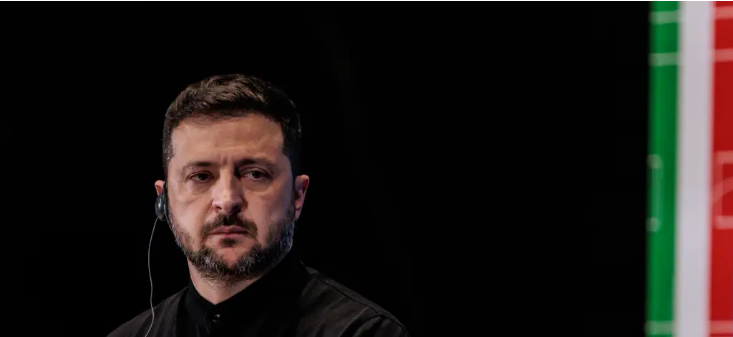As global attention turns toward the upcoming meeting between former U.S. President Donald Trump and Russian President Vladimir Putin, Ukraine and its European allies have issued a strong rebuke to a proposed Russian cease-fire plan. Moscow’s offer, which demands significant territorial concessions from Ukraine in exchange for a pause in fighting, has been firmly rejected by Kyiv and several European capitals. Instead, they have presented a counter-proposal that prioritizes Ukrainian sovereignty, European involvement, and genuine security guarantees.
The dispute comes amid growing fears that negotiations between Trump and Putin — reportedly scheduled to take place in Alaska on August 15 — could result in an agreement that excludes Ukraine and legitimizes Russian territorial gains.
Putin’s Proposal: A Ceasefire with Strings Attached
Russian President Vladimir Putin’s proposal involves an immediate cease-fire — but only under the condition that Ukraine cedes a substantial portion of its eastern territory, particularly parts of the Donetsk region currently occupied by Russian forces. This offer essentially seeks to freeze the current front lines, locking in territorial gains for Moscow while halting further hostilities.
According to analysts, this type of “frozen conflict” strategy mirrors previous Russian interventions in places like Georgia and Moldova, where military gains are institutionalized through political agreements under the guise of peace.
While the proposal is framed as a step toward ending the conflict, Ukraine and its allies see it as a trap — one that would force Kyiv into a disadvantageous settlement, reward aggression, and fail to secure long-term peace or sovereignty.
Ukraine and Europe Push Back
Ukrainian President Volodymyr Zelenskyy swiftly rejected the offer. In a televised address, he stated, “We will not trade land for peace. Any ceasefire must begin with Russia’s withdrawal, not Ukraine’s surrender.” Zelenskyy emphasized that his government would not accept a settlement that formalizes the division of Ukraine or leaves occupied territories under Kremlin control.
European leaders, including those from Germany, France, and the United Kingdom, echoed Zelenskyy’s position. A joint statement released by EU foreign ministers called the Russian plan “unacceptable” and “contrary to the principles of sovereignty and territorial integrity under international law.”
European Commission President Ursula von der Leyen reinforced the EU’s position, stating: “Peace cannot be built on occupation. Any resolution must come with full respect for Ukraine’s borders and full participation of Ukraine in the negotiation process.”
A Counter-Proposal from Ukraine and Europe
In response, Ukraine and its European partners have crafted a comprehensive counter-proposal. Key points include:
-
Cease-fire without Preconditioned Territorial Concessions: A temporary halt in fighting must not depend on Ukraine giving up land. A true ceasefire must be unconditional and verified by neutral international observers.
-
Reciprocal Territorial Concessions Only with Mutual Agreement: If any border changes are to be discussed, Russia would also be expected to make territorial withdrawals. This rules out unilateral Ukrainian concessions.
-
Security Guarantees: Ukraine seeks binding defense guarantees, possibly through NATO membership or a multilateral security pact involving European powers and the United States.
-
Ukrainian Participation in Talks: No negotiation about Ukraine can occur without Ukrainian representation. Excluding Kyiv undermines the legitimacy of any agreement.
-
War Crimes Accountability: Any deal must include mechanisms to hold Russian officials accountable for war crimes and human rights abuses committed during the invasion.
This plan has been shared with the Biden administration and key U.S. allies, though former President Trump — who is currently campaigning for a return to office — has remained noncommittal publicly about the proposal’s merits.
The Trump–Putin Meeting: High Stakes, Low Transparency
Trump’s upcoming meeting with Putin has sparked international concern due to its secrecy and the apparent exclusion of Ukrainian officials. The summit, to be held in Anchorage, Alaska, will be the first formal conversation between the two leaders since Trump left office in 2021.
Sources close to the former president claim he intends to broker what he calls an “America-first peace deal,” which would end U.S. military aid to Ukraine in exchange for a Russian ceasefire. Critics warn this could give Putin everything he wants without offering Ukraine adequate protections.
Current and former European officials have raised alarm over the summit. “If Trump and Putin negotiate a deal without Ukraine present, they are not negotiating peace — they’re dividing a sovereign country behind closed doors,” said one senior EU diplomat.
Ukrainian Foreign Minister Dmytro Kuleba put it more bluntly: “You cannot cut a country in half and call it diplomacy.”
Risks and Reactions
Analysts are divided over what the Trump–Putin meeting could produce. Some believe it may be a publicity stunt designed to strengthen Trump’s campaign credentials. Others fear it could lay the groundwork for a future U.S. policy shift that recognizes Russian claims in Ukraine.
Western intelligence services are reportedly monitoring Russian troop movements closely in case the ceasefire offer is merely a stalling tactic, allowing Moscow to regroup and launch fresh offensives if talks fail.
Meanwhile, Eastern European countries such as Poland, the Baltic States, and Romania are rallying behind Ukraine, warning that appeasement will only embolden Russia. “What starts in Ukraine won’t end in Ukraine,” said Latvian President Edgars Rinkēvičs. “If we give in here, the next war will come to our doorstep.”
What Comes Next?
As the Trump–Putin summit draws near, pressure is mounting on both leaders to clarify their positions. The Biden administration has not officially endorsed Ukraine’s counter-proposal, but Secretary of State Antony Blinken has stated that “any peace process must be led by Ukraine and reflect the will of the Ukrainian people.”
In Kyiv, there is a sense of defiance and determination. Ukrainian forces continue to hold the line, bolstered by ongoing European military support and diplomatic backing. Civilians, weary from years of war, remain skeptical of any deal that doesn’t guarantee lasting security and full sovereignty.
For now, Ukraine and its allies remain united in rejecting Russia’s offer — and in preparing their own path forward.
Conclusion
The current diplomatic maneuvering reflects a critical juncture in the war. Russia’s proposal, while outwardly offering peace, demands the abandonment of key Ukrainian territories — a demand Ukraine and its partners view as unacceptable. The coming Trump–Putin meeting could reshape the trajectory of the war, but only if it upholds international norms and includes Ukraine at the table.
Peace, if it comes, must be just — not merely convenient.


